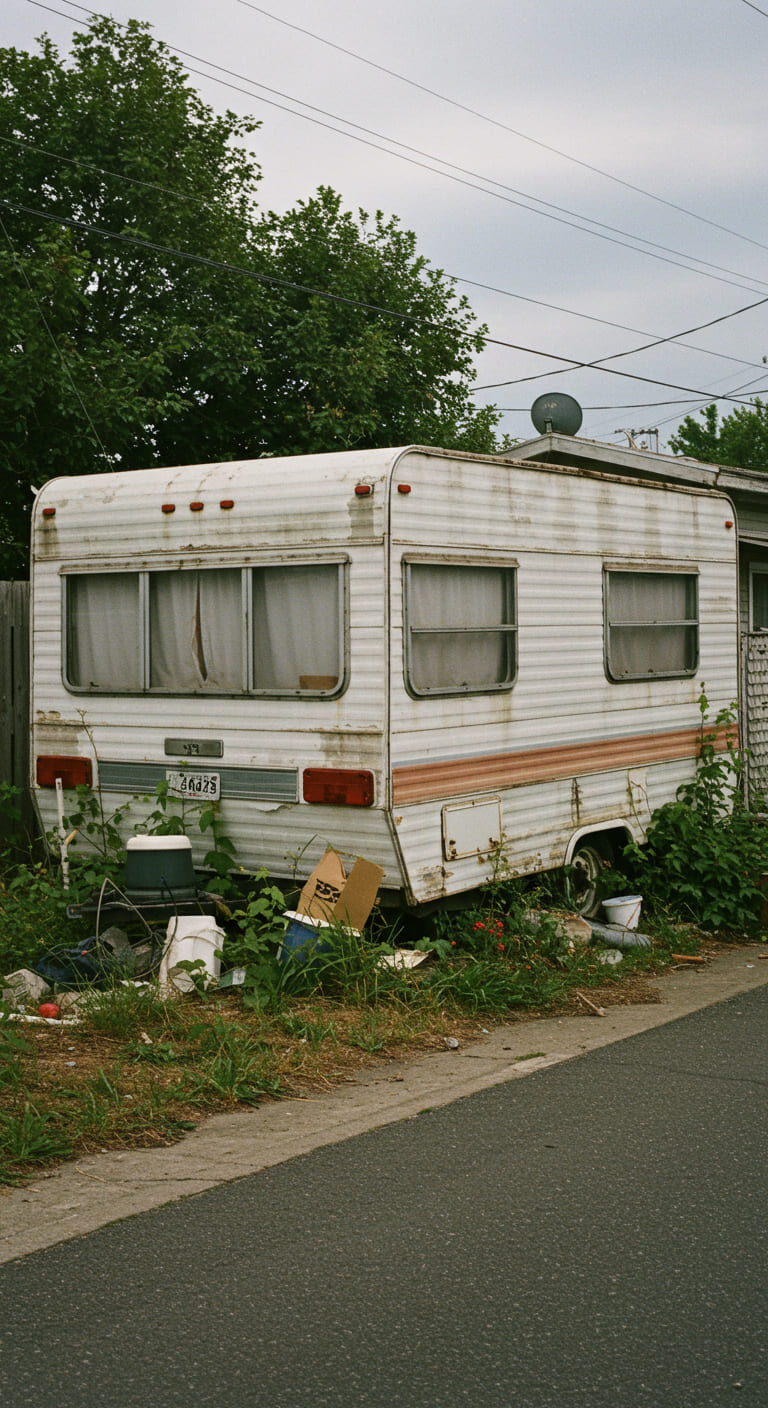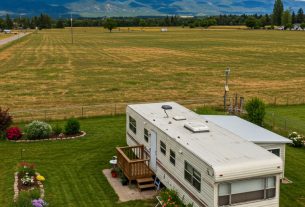When I first moved into my mobile home, the thought of climbing onto the roof felt daunting. I often wondered, “Is it safe to walk on a mobile home roof?” It’s a common question among mobile homeowners, and today, I want to share my insights, experiences, and tips to help you navigate this concern safely.
Understanding the Structure of Mobile Home Roofs
Before we dive into safety, let’s take a moment to understand what we’re dealing with. Mobile home roofs are generally flat or have a slight pitch, which differs from traditional homes. This design influences not only their construction but also how we interact with them.
- Types of Roofs: Most mobile homes feature either a metal roof, rubber roof (EPDM), or shingled roof. Each type has its unique properties and weight-bearing capacities.
- Weight Distribution: The structure of a mobile home is designed to support the weight of the home itself, but is it equipped to handle the additional weight of a person walking on it?
- Age and Condition: The age and condition of the roof play a critical role. Older roofs or those in disrepair may not be safe to walk on.
Assessing Safety: Key Considerations
Now that we have a foundation of knowledge, let’s explore the key factors that determine whether it’s safe to walk on your mobile home roof.
1. Roof Type Matters
Each type of roof requires different considerations:
- Metal Roofs: Generally durable and can support weight, but be cautious of rust or corrosion.
- Rubber Roofs (EPDM): These are lightweight and can hold a person’s weight but are prone to punctures.
- Shingled Roofs: These roofs can be more fragile and may not support heavy foot traffic.
2. Inspecting the Roof Condition
Before even thinking about climbing up, conduct a thorough inspection:
- Look for Damage: Check for visible signs of wear, such as cracks, sagging, or missing shingles.
- Check for Puddles: Standing water can indicate drainage issues that may compromise the roof’s integrity.
- Inspect the Support: Ensure the underlying framework is sound and supports additional weight.
3. Weather Considerations
Weather can significantly affect safety:
- Wet Conditions: Rain or dew can make the surface slippery, increasing the risk of falls.
- Snow and Ice: Accumulation can add weight and make walking dangerous.
- Windy Days: High winds can throw you off balance while on the roof.
Preparing for Your Roof Walk
If you’ve assessed your mobile home roof and determined it’s safe to walk on, preparation is key. Here’s what I recommend:
1. Use Proper Footwear
Wearing the right shoes can make all the difference:
- Non-Slip Soles: Choose shoes with good traction to prevent slipping.
- Sturdy Construction: Avoid sandals or flimsy shoes that may not provide support.
2. Bring the Right Tools
If your purpose for walking on the roof is maintenance, gather necessary tools:
- Safety Harness: For added security, especially if your roof is steep.
- Tools for Repairs: Bring a small toolbox for any quick fixes.
- Mobile Phone: Always have a way to call for help if needed.
3. Have a Partner
It’s always safer to have someone with you:
- Extra Set of Eyes: They can help spot potential hazards or assist you.
- Emergency Assistance: In case of a fall or accident, having someone nearby can be crucial.
Common Mistakes to Avoid
As I gained experience walking on my mobile home roof, I learned several pitfalls to avoid:
- Ignoring Weather Reports: Always check the forecast before climbing.
- Neglecting Maintenance: Regular roof inspections can prevent future problems.
- Heavy Foot Traffic: Avoid walking on the roof more than necessary, as it can wear down the materials.
Real-Life Experiences: What Others Have Faced
Throughout my journey, I’ve spoken to many mobile homeowners about their experiences. Here are a few compelling stories:
Case Study 1: The Metal Roof Mishap
One neighbor, John, had a metal roof and decided to clear debris after a storm. He climbed up, but neglected to check for rust. As he walked, a section crumpled under his weight, causing him to slip and fall. Thankfully, he only sustained minor injuries, but it was a wake-up call about the importance of roof inspections.
Case Study 2: The Rubber Roof Repair
Another friend, Sarah, had a rubber roof and was repairing a leak. She used a ladder to reach the roof and was careful to distribute her weight. However, she forgot to clear the surface of leaves and debris. As she walked, she slipped on wet leaves and fell. Fortunately, she had a harness on, which prevented serious injury.
Benefits of Walking on Your Mobile Home Roof
Despite the risks, walking on your mobile home roof can be beneficial:
- Regular Maintenance: Catching issues early can save on costly repairs.
- Improved Safety: Staying proactive about roof health can prevent emergencies.
- Enhanced Longevity: A well-maintained roof lasts longer and provides better insulation.
Conclusion: Is It Safe to Walk on Mobile Home Roofs?
In conclusion, walking on a mobile home roof can be safe if you take appropriate precautions. Assess your roof type, inspect its condition, prepare adequately, and avoid common mistakes. As I’ve learned through personal experiences and those of others, the key is to approach with caution and respect for your home’s structure.
Now, I encourage you to share your experiences. Have you walked on your mobile home roof? What tips do you have for others? Let’s start a conversation and learn from one another!
FAQs
Can I walk on my mobile home roof if it’s flat?
Yes, but ensure that it is in good condition and that you take necessary precautions.
What if I notice damage on my roof?
If you see damage, it’s best to consult a professional before attempting to walk on it.
Are there any safety harnesses recommended for mobile home roofs?
Look for harnesses that are lightweight and easy to use, designed for residential use.
If you found this article helpful, please consider signing up for our newsletter for more tips and advice. Share this with friends and family or on social media to spread the word! Your safety matters, and together we can ensure our homes remain safe and sound.
fouwick LED Trailer Light, License plate light, 12V Easy Install Waterproof for Under 80 Inch Boat utility Trailer Trucks Campers RVs Snowmobiles DOT Compliant (Light only)
$14.90 (as of November 15, 2025 07:52 GMT -03:00 - More infoProduct prices and availability are accurate as of the date/time indicated and are subject to change. Any price and availability information displayed on [relevant Amazon Site(s), as applicable] at the time of purchase will apply to the purchase of this product.)
Sign up for our newsletter and stay up to date with exclusive news
that can transform your routine!





